ST BENOIT DU SAULT
LE MAISON JOLY

ST BENOIT DU SAULT
LE MAISON JOLY

St Benoit Du Sault is one of the Plus Beaux villages of France,built on a rocky hill above the River Portefuille it is situated in the deep South West of Indre it is ideally situated to visit the departments of the Limousin & Charente.
St Benoit Du Sault is on the border of two medieval cultures "Oc" & "Oil" and is seen as the gateway to the occitane. This medieval town still has many reminders of times when fortified walls and gate houses were needed for protection from invading enemies. The town was surrounded by a double line of ramparts. The first, the most ancient, protected the priory, the church and the fort, the second established in the XVth century encircled the commercial part. It is said that when St Benedictine monks came they changed the name of the town into that of its owner, Saint-Benoît, the "Sault" was added, probably because of thick wood, "saltus", which surrounded it.
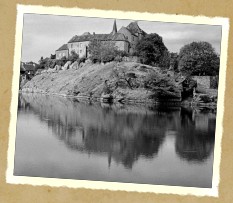
Today our medieval village remains active with its small shops, In the main village street many still possess the same position as their predecessors of the 15th century.
There are three banks in the village two with in the wall cash machines. A Super 'U' supermarket where you will find all your needs. If you prefer to shop in the main street you will find two Charcuterie's, two Boulangerie's a Patisserie, two Hairdressers and a barbershop, two Pharmacies, Maison de la Presse and an Epicerie. On the road into the village there are two petrol stations.

Le Maison Joly Was once an important residence in the village and housed the Town Banker originally the property also included the adjoining property, however the Maison as it is today was divided into two in 1902. The current owners Glyn & Vicky Bidwell purchased the property in 2003 and commenced its renovation, it had not been lived in for 30 years. During removal of an unwanted cupboard we stumbled upon 11 boxes of glass plate negatives, these date from approx 1874 -1930. During this time the property housed one of the first photographers not only in France but possibly the world. The negatives can still be used and examples of these can be seen in Bedroom 1 and the dividing corridor on the first floor.
Details of Le Maison Joly Ground Floor Entrance hall and stairs to first floor.
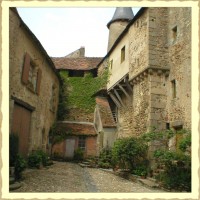
View from Maison Joly of the renaisance style court yard of the Portail


Door Opens onto small Terrace with a table and chairs


Bedroom 1
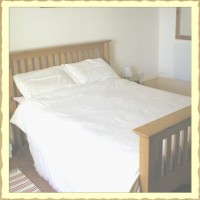
Bedroom

Bathroom
General
All linen supplied / ironing board avalable. There is an additional guest bed in the ist floor corridor cupboard.

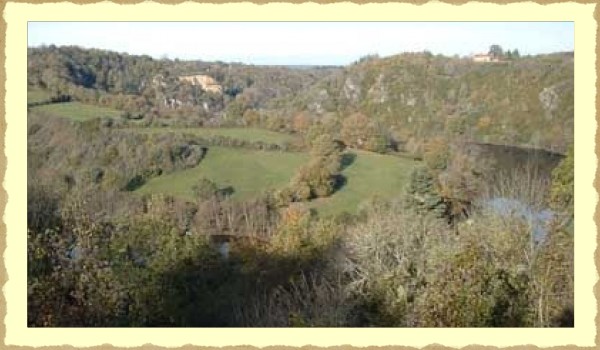
Badecon-le-Pin
Superb Picturesque Countryside![]()
The countryside around St Benoit du Sault is quiet and very picturesque any time of the year. There are many attractive hamlets and villages to be found away from the main roads. Even on the warmest August days you will probably have the winding narrow lanes to yourself, leading through woodland, alongside lakes and over rivers with fish rising. Hawks and Buzzards are always to be seen and with luck you may briefy spot some deer browsing in the dappled shade, deep in the woodland. In the warm, still afternoon sun it is easy to see where Debussy found the inspiration to compose his "L'Après-midi d'un faune.
For busier excursions, St Sulpice le Feuilles is a 20-minute drive and has a supermarket, butchers, bakers, hairdressers, bar, petrol station and many other shops.
Also, the quaint old town of La Souterraine is a 30-minute drive with its cobbled streets and narrow alleys that lead to a small tree lined square with cafes, bars and a number of immobiliers. It also has two large supermarkets, an indoor swimming pool and sports centre. La Souterraine main line railway station provides direct and fast access to Paris to the north, Limoges and the South coast and is an excellent opportunity to take the fast and famous TGV.
Limoges, the busy capital of the Limousin region is a very large city. All sections are easily accessed by the major A20 autoroute. Alternatively one can take the train from La Souterraine.
The nearest airport, Bellegarde at Limoges is about 50 minutes, or Poitiers which is an hour away. In addition to the many restaurants, excellent shops and fashionable boutiques in Limoges, the numerous porcelain shops and factories are a worthwhile visit
Fishing, walking, cycling both on and off road, golf and horse riding may all be found within easy reach of St Benoit du Sault. Lakes and rivers abound in the surrounding countryside. Lac Mondon, Chaillac and Lac d'Eguzon are all close by and have their own sandy beaches. The impressive Lac d'Eguzon has a variety of outdoor activities, including water-sports and rock climbing. Slightly further a field are Lac de St Paradour and Lac Vassivere with it's extensive water sports complex.
There are many fine castles and chateaux in the area. Gargilesse, nestles in the hollow of a small valley following the river of the same name just before it joins the Creuse.
The countryside in this region provides a spectacularly picturesque scene the year round. So much so that many landscape painters have chosen to live and create here alongside musicians and craftsman who all seem to draw inspiration from the countryside.
Fresseline is a pretty village where the confluence of the two rivers of the Creuse can be seen and where Monet stayed and painted during 1889.
Walking routes and paths can be found crossing the countryside everywhere to provide hours of exploration for walkers and naturalists, with routes that are often marked by coloured strips on trees or fences.
In autumn the woods and fields become ripe with harvests of champignons and chestnuts. Wild mushrooms are always a risk but may identified as edible if taken to a local pharmacy.
On most weekends the year round there ara events such as Vide Greniers (means Vacuum Loft) that are street fairs very similar to car boot sales. These can be great fun and a good place to pick up the odd curio or other interesting item.
Summer brings endless fetes and the most impressive fireworks, with chestnut fairs in autumn, boule tournaments and even tea dances throughout the year.
The Christmas season is generally a long and highly visible celebration. Many villages decorate their community with Christmas lights and garlands to blend with a crisp frost or the occasional fall of snow, turning the countryside into a very brief but amazingly picturesque fairytale scene.
St Benoit du Sault is an idyllic location and a visit to the area at any time of the year, will be a rewarding and worthwhile experience.

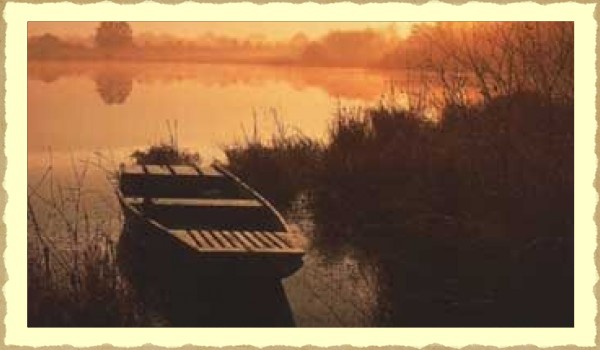
Le Brenne
The Brenne National Park ~ http://www.parc-naturel-brenne.fr/english
The edge of the amazing Brenne National Park is a 10-15 minute drive from St Benoit du Sault.
To indicate the scale of the Brenne; it covers 166,000 hectares and includes 2,234 lakes!
The Brenne is an ideal location for anyone who enjoys picturesque scenery and a special delight for:
* Bird-watchers
* Naturalists
* Walkers
* Cyclists
* Photographers
* Anglers
There are no charges for access to this vast park.
The celebrated La Creuse River cuts a wide arc across the Brenne centre, from Argenton-Sur-Creuse in the east to Tournon Saint-Martin in the west.
St Gaultier, Ruffec, Belabre and Le Blanc are just a few of the attractive riverside towns and villages located on La Creuse. These are easily reached from the main east-west road route that closely follows the course of La Creuse, across the park.
FLORA & FAUNA
BIRDS
The many resident and migrant birds found within the Brenne include:
Purple Heron

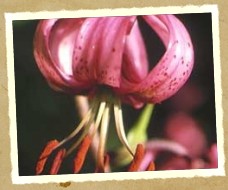
This is a fraction of the 150 main species of the total of 267 recorded within the Brenne.
FRESHWATER TORTOISE
The Brenne is also France's most important site for the protected Freshwater Tortoise weighing up to 1kg.
DEER & BOAR
Within the Brenne Forests both Red & Roe Deer are to be found, along with Wild Boar in large numbers.
PLANTS
The Brenne also carries an immensely rich plant life with approximately 1200 recorded species including wild orchids, .
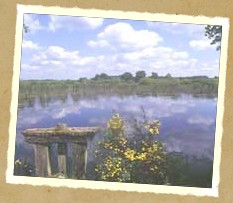
One of the many Brenne lakes

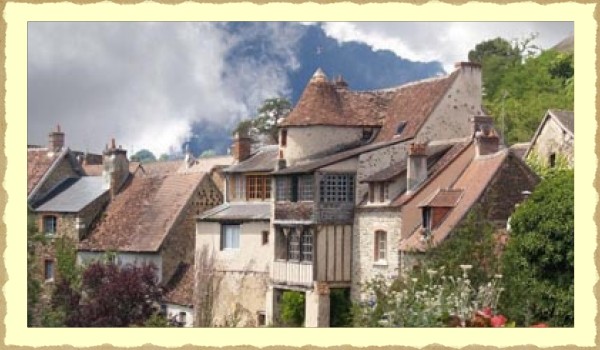
Gargilesse Dampierre
.

Le Blanc
|
A market town in a lovely setting |
|
A stunning viaduct |
|
|
|
|
|
|
|
|
|
Day trips and explorations... |
|
Closer to home |
|
Below them both, the river flows peacefully by as it has for centuries, the whole scene making a most attractive image. |
|
All mod cons |
|
Excellent restaurants |
|
|
Other places of interest locally include the mediaeval city of Loches, with its castle and citadel, the Haute Touche animal park which has hundreds of animals in a forest environment, and Chauvigny, where the spectacular sight of five chateaux, clustered together on a hill top, is illuminated at night. Le Blanc also has the advantage of being situated close to the National Park of the Brenne, which is known as the "land of a thousand lakes". Nature lovers will adore the opportunities that this affords them to see rare species of birds and other wildlife, whilst others can simply enjoy the peace and beauty which surrounds them.

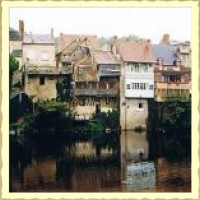
Argenton sur Creuse
Argenton-sur Creuse is one of the most picturesque towns in the Indre. Its streets and lanes lead to the heart of the town where most of the small shops still are today. Argenton evolved from the Romano-gallic city of Argentomagus at St Marcel and in the middle ages, a fortress towered over the valley. The castle changed hands several times, was taken by the English, taken back by the French and finally finished in French hands with Henri IV in 1589.
There are many beautiful mediaeval houses, with curved roofs and balustrades, and the view of the river with its overhanging houses gives it the name of "La Venise du Berry", (the Venice of the Berry).
Visit the Shirt Museum (Musee de la Chemiserie et de l'Elegance masculine, where you can find out about the long history of shirtmaking in the town. Go up to the little chapel of La Bonne Dame, where the Golden Virgin stands, and take in a panoramic view from the top of the town of the Creuse Valley dreaming quietly at the foot of the green hills and stunning cliffs
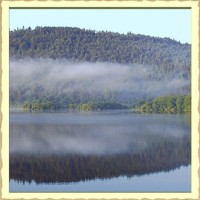
Lake Chambon (Eguzon)
Further south in the Indre is the Eguzon dam, one of the largest in Europe which slows the course of the river Creuse and produces 90m kw of electrical power annually. It also provides one of the best stretches of water.
The 300-hectare Lake Chambon at Eguzon has sandy beaches and is perfect for sunbathing, sailing and fishing.
Closer to Home is the lake at Chaillac, smaller than Eguzon it offers everything but water sports.

.
ORADOUR SUR GLANE
10th June 1944 Towards the end of the Second World War, in a peaceful part of France, there took place a particularly horrible murder of 642 men women and children.
On the 10th of June 1944, a group of soldiers from the Der Führer regiment of the 2nd SS-Panzer Division Das Reich entered and then surrounded the small town of Oradour-sur-Glane, near to the city of Limoges.
At first, they told the Mayor, Jean Desourteaux, that there was to be an identity check and that everyone must go to the Champ de Foire (fairground) whilst this took place. After rounding up all the inhabitants that they could find, the SS then changed their story from that of an identity check, to one of searching for hidden arms and explosives. The soldiers then said that whilst they searched for the arms the women and children must wait in the church and the men in nearby barns.
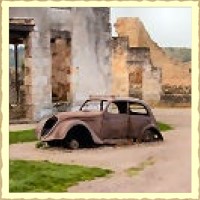
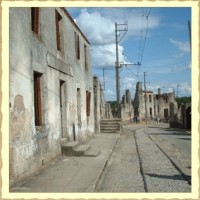
The women and children were marched off to the church, the children being encouraged by the soldiers to sing as they went. After they had left the men were divided into six groups and led off to different barns in the town under armed guard. When the townspeople were all safely shut away the SS began to kill them all. A large gas bomb, seemingly made out of smoke-screen grenades and intended to asphyxiate the occupants, was placed in the church, but it did not work properly when it went off and so the SS had to use machine guns and hand grenades to disable and kill the women and children. After they had subdued all the occupants of the church, the soldiers piled wood on the bodies, many of whom were still alive and set it on fire. Only one person managed to escape alive from the church and that was Madame Rouffanche. She saw her younger daughter who was sitting next to her killed as they attempted to find shelter in the vestry. Madame Rouffanche then ran to the altar end of the church where she found a stepladder used to light the candles. Placing the ladder behind the altar she climbed up and threw herself through a window and out onto the ground some 10 feet below. As she picked herself up, a woman holding her baby tried to follow, but they were seen by the soldiers and both woman and child were killed.
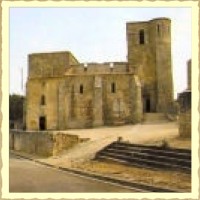
At the same time that the gas bomb exploded in the church, the SS fired their machine guns into the crowded barns. They deliberately fired low, so that many of the men were badly wounded but not killed. The soldiers then piled wood and straw on the bodies and set it alight, many of the men unable to move because of their injuries burned to death, . Six men did manage to escape from Madame Laudy's barn, but one of them was seen and shot dead, the other 5 all wounded, got away under cover of darkness. In spite of being shot and wounded five times, Madame Rouffanche escaped round the back of the church and dug herself into the earth between some rows of peas, where she remained hidden until late the next day. Whilst these killings were taking place, the soldiers searched the town for any people who had evaded the initial roundup and killed them were they were found. One old invalid man was burned to death in his bed and a baby was baked to death in the local bakery ovens, other people were killed and their bodies thrown down a well. People who attempted to enter the town to see what was going on were shot dead. A local tram which arrived during the killings was emptied of passengers, who after several terrifying minutes were let go in peace.

After killing all the townspeople that they could find, the soldiers set the whole town on fire and early the next day, laden with booty stolen from the houses, they left.
The soldiers journeyed on up through France to Normandy and joined the rest of the German army attempting to throw the allied invasion back into the sea. Many of them, including Sturmbannführer Adolf Diekmann, who had led the attack on Oradour-sur-Glane, were killed in the Normandy battles.
What has fascinated people ever since the 10th of June 1944, is why did the SS act as they did? Why did they turn up at Oradour that day and without mentioning anything to the inhabitants, kill them all? That a few people survived the attack was not due to any lack of zeal on the part of the SS, but why did they do it?
There had never been any obvious Resistance activity in the town, the Germans had never been attacked by the townspeople and after the killings were over the SS left without saying why they had done it to anyone at all. If the attack had been a reprisal for some violence towards the German forces, it would be normal for the Germans to say to all the local population, 'that's what you get when you help the Resistance, let that be a lesson to you all'. But they did not, they just left without saying a word.



St Benoit Du Sault
Village Views





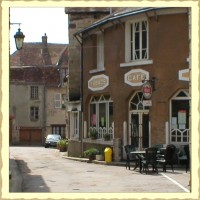
Village Bar (near to the internet shop)
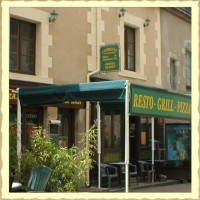
St Benoit Du Sault
More Village Photos
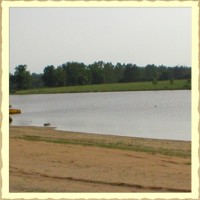
The Lake at Chaillac
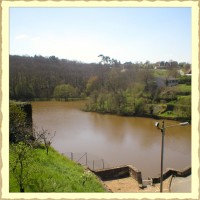
The Moat/Lake around the Church
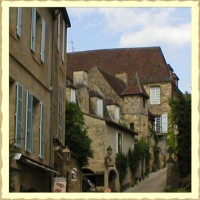
Old Properties
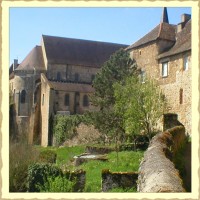
The rear of the Church








Directions from La Havre
Follow the sign post for the motorway to Rouen
There is a toll bridge you need to cross (do not make mistake and head for Honfleur toll bridge) stay left on the motorway at all times untill you see the signpost for the toll bridge and Rouen. The toll for the bridge should be about 3Euros.
Passing Rouen follow the motorway link to the new motorway linkroad direction of Evreux.
Follow route direction Dreux.
Route direction Chartres.
Route direction Orlean, (N154) Join the motorway either at Janville or Artenay (Toll) stay on the motorway until the exit for Chateauroux is displayed (near Vierzon) there is a Peage is at this point and the toll for a car is about Euros10. There are no further toll roads.
Follow the A20 around Chateauroux until you reach exit 20.
Exit the motorway and turn left at the end of the slip road. The route distance from here is about 10 KM.
Route - St Verger
Parnac
Mainclef
After going through Mainclef there is a T Junction and St Benoit Du Sault is sign posted to the left.
About a Kilometre down you will pass the supermarket (Super U). 200 metres past this on the right hand side you will pass the Hotel Du Centre, another 100 metres on and the road bends around to the right towards Limoges at this point facing you should be an opticians Optic 2000. You need to take the road to the left of this ( Rue Grand) you drive past shops take the first left (past the Patiseree) into Place Heerve Faye. The epicerie is on your left and facing you is a hairdressers. Follow the road around to the right and the sports bar should be facing you (the road at this point is one way), as you follow the road around the medieval Portail is facing you. If you go through the Portail, # I Rue Emile Guinnepain is the first property on your left.

Directions from Limoges Airport.
Upon exiting the Airport follow the signs for the A20 Motorway.
This about 20 kilometres from Aeroporte Bellegarde, follow the A20 for about 60 Kilometres and come off at junction 20.
Exit the motorway and turn left at the end of the slip road. The route distance from here is about 10 KM.
Follow the road through
St Verger
Parnac
Mainclef
After going through Mainclef there is a T Junction and St Benoit Du Sault is sign posted to the left.
After about a Kilometre you will pass the supermarket (Super U). 200 metres past this on the right hand side you will pass the Hotel Du Centre, another 100 metres on and the road bends around to the right towards Limoges at this point facing you should be an opticians Optic 2000. You need to take the road to the left of this (Rue Grande), driving past shops take the first left into Place Herve Faye. The epicerie is on your left and facing you is a hairdressers. Follow the road around to the right and a sports bar should be facing you, the road at this point is one way and as you follow the road around the medieval Portail is facing you. If you go through the Portail, # I Rue Emile Guinnepain is the first property on your left.



The Courtyared to our property is now available. At the time of the photographs being taken we were awaitng delivery of our traditional barbecue. This has now been delivered and is awaiting your use.



